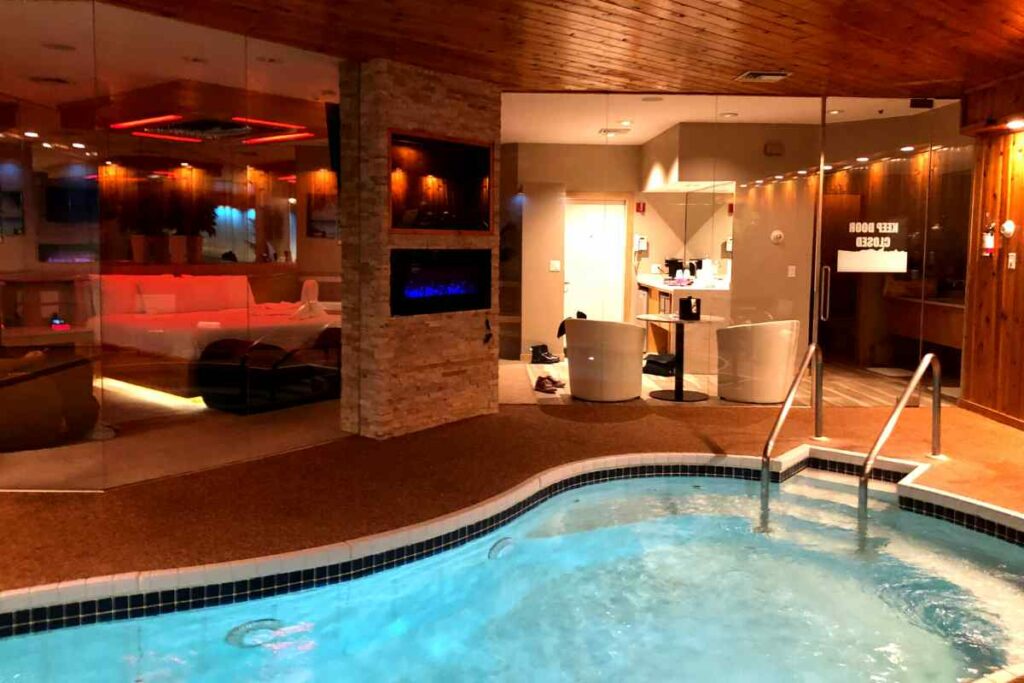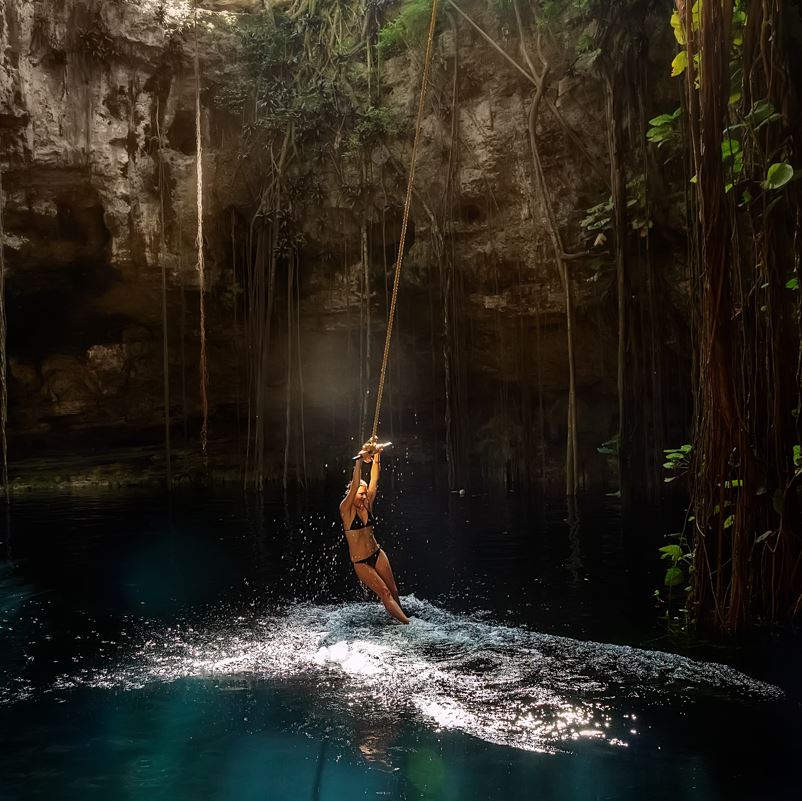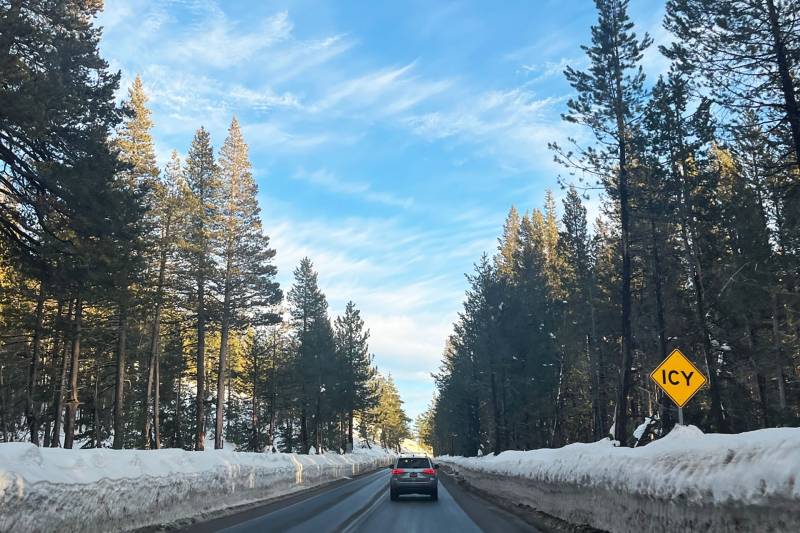
There are easy bike rides and there are challenging bike rides. The challenging ones tend to go … [+]
Cycling trips are one of my all-time favorite types of vacations, just a great way to explore beautiful destinations around the world in a deep dive while getting exercise, fresh air, and being able to indulge in guilt-free eating and drinking along the way (Check out this great new bike trip on Kentucky’s Bourbon Trail I just wrote about here at Forbes)
These trips are hotter than ever, thanks to the explosion in interest in cycling, fitness, and outdoor activities driven by the pandemic. At the same time, the new generation of home cycling fitness, led by platforms like Strava, Peloton, iFit and Zwift, have allowed consumers to virtually “ride” famous race routes, climbs, roads, trails and tours around the world, whetting their appetites for the real thing.
But as much as I love luxury bike trips with white glove support, Michelin-starred meals, frequent gelato breaks and 4 and 5-Star accommodations, these trips are not for everyone. Many of the more avid cyclists I know find the popular offerings (Tuscany, Burgundy, Napa Valley, Vermont, etc.) run by the best outfitters too tame. If you do not ride a lot, you may well find an average of 25-30 miles daily a lot of work, but for a serious cyclist, that’s just a casual hour and a half out of a full day. In addition, the flow of these trips is generally designed for a leisurely pace, and on the last group trip I did, when I rode hard, I found myself ahead of the support van, ahead of most of the aid stations, and basically turned it into a unsupported ride by riding too fast. On another group trip to Italy one of the guides asked my wife and I to stop for an espresso break at a cafe because we were going to get to lunch too early.
Most of the many cycling trips I have been on around the world feature multiple daily route choices, but these typically run in a fairly tight range, from as little as 12 to as many as 45 miles, and I think of all the trips I’ve done with luxury outfitters, the longest single day option – by a substantial margin – has been a metric century, 62-miles. That’s a long ride for many, but for some cyclists it’s just another ride.
So, to be clear, most people looking for a fun, active travel vacation can pick almost any bike trip run by a top company and have an absolute blast. But if you are more experienced, more energetic and more into cycling itself, you may find you need a little bigger challenge. Fortunately, in the world of travel there is something for everyone, and these following trips are for the second kind of cyclist.
If you sign up for DuVine’s Alps Journey across France, you can expect a lot of time in the … [+]
DuVine Journey Tours: While most of the best luxury tour operators skew lower impact, Boston-based DuVine is a notable exception, with a catalog of trips for every ability, from first timer to enthusiast. As founder Andy Levine told me, “I didn’t see options out there for the cyclist who wants to ‘suffer in comfort,’ so to speak, so these point-to-point excursions offer our strongest travelers the opportunity to push their limits and conquer these lifelong dreams – legendary routes, cols, and summits – while still benefitting from DuVine’s pro support and service hallmarks. Our guests know that a DuVine tour is set apart by choice hotels, the best local guides in the industry, impeccable service, and an obsession with food and wine. We design most of our trips to appeal to all levels of cyclists, because we believe everyone should experience the world by bike. But for those who are more serious about their kms and elevation gain, we created our Journey Tours.”
I went on an absolutely amazing cycling trip via sailboat to unexplored Greek and Turkish islands with DuVine last year, a trip no other U.S. operator offers, and wrote about what made it so great here for Forbes. Everything from food to guides to gear to routes chosen were first class, it was wonderful, and I loved it. How good is DuVine? Well in 2022, Travel + Leisure Magazine rated them the Number One Best Tour operator in the world – and not just for active travel. As T+L explained, “A tour with DuVine goes far beyond just riding a bike – it’s a way to really see the character of a destination. Case in point: even those who say they’re not necessarily cycling fans have been converted… Its ‘top-notch biking equipment’ and ‘challenging but doable itineraries’ didn’t hurt either.”
The company’s “Journey” trips crank things up a notch in terms of challenge while still keeping the luxury aesthetic and Levine’s famous focus on wine and food. You’ll need those calories to recharge on these trips. For example, the Alps Journey takes you by bike from Lake Geneva to the Mediterranean Coast, down the spine of the Alps, and the description pulls no punches: “Conquer France’s greatest, hardest, and most famous climbs, including the Alpe d’Huez, Col du Galibier, Col d’Izoard, and Col de la Bonette.” The Alps are big mountains and these legends from the Tour du France are big, epic climbs. The trip is rated Level 4 on DuVine’s 1-4 scale, which translates to 3000-6500 feet of climbing and 50-60 miles daily, though many Journey days are even harder. Level 4 is “not recommended” for recreational cyclists, and “not recommended without serious training” for intermediate cyclists. This trip covers 369 miles in 6 days, the longest being 71, all with big climbs.
There are four other Journey Tours, all rated Level 4, including the Dolomites Journey, Pyrenees Journey, Switzerland Journey and the most enticing of all, the Italian Coast-to-Coast Journey. As the name suggests this ride traverses the breadth of Italy from the Adriatic to the Mediterranean, across the Apennine mountains and then through hilly Umbria and Tuscany. There are two 70-plus mile days, including 75 with 5500’ of climbing. That’s worth a lot of gelato!
Cyclists retracing Hannibal’s journey across the Alps may suffer in the saddle, but not off the … [+]
Ride & Seek Hannibal Across The Alps: Ride & Seek is a one of a kind bike tour operator that takes a one of a kind approach, with a dozen historical “Epics” spanning 30 countries (in case you were not counting that means each trip averages two and a half countries). These are long, involved rides based on historical events, and in addition to iron lungs, strong legs and a lot of willpower, you might also need a sabbatical.
The company’s most famous signature is the Hannibal Tour, which retraces the steps of the famous elephant equipped conqueror from Barcelona to Rome – across part of Spain, all of France and good chunk of the length of Italy in “just” 32 days. But Hannibal rode elephants and didn’t have to pedal up and over the Alps – you will. The lodging is less opulent than companies like DuVine, but still a big step above roughing it, with a carefully selected slate of Italian agriturismos, manoirs in France and historic paradors in Spain. There are no breaks, you ride all 32 days, the longest being 87 miles. The only easy day is the first, a 10-mile warm up, immediately followed by the hardest day, 86 miles climbing 6129 feet. The short days are in the 40s and there are four 80-plus rides. This is the company’s classic, but they rotate and offer the big tours every few years. The next Hannibal has not yet been scheduled. However, in the same vein and about the same length, they just put “Marco Polo Biking Tour From Italy to Athens,” on for 2024.
The Conquest of the Moors with Ride & Seek is challenging, but the payoff is world class attractions … [+]
Ride & Seek Conquest of the Moors and Other Epics: This one is coming up fast, but there’s still room for the April/May 2023 Conquest of the Moors departure. Explore the history of the Moors as you cycle first in Morocco from Fes to Tangiers. Then cross the Mediterranean to the Iberian Peninsula and ride from Portugal to the old capital of Cordoba, Spain. This tour focuses on insight into the legacy left by 700 years of Muslim rule. It lasts 24 days and is a bit easier, with just seven days in the 60s and 70s mileage realm, some shorter days, and even a rare rest day in Jerez, where you can enjoy the famous local specialty, Sherry.
All of the Epics are broken into at least two stages, which can be booked individually, so some riders (maybe with less vacation time) come back in different years to complete them. Owner Dylan Reynolds told me that, “We have had many riders come back to ride individual stages over the years. All of our Epics are set up to allow riders to ride the whole route or choose stages within it. I would say 50{d8a8d447f05f03c64398acf0d3c5a745c9c41fc784ba89cd5aecd37177dc7d51} of riders generally choose to do the whole Epic with the rest doing individual stages. Interestingly some tours attract more riders wanting to do the whole thing – Napoleon comes to mind – whereas our 3 Islands tour (Corsica, Sardinia, Sicily) works well for people wanting to do individual islands.”
The white roads of Tuscany crisscross the famous landscape of the Val d’Orcia, a UNESCO World … [+]
Tourissimo Strade Bianche: For the past few years “gravel grinding,” or riding heavier duty road bikes with slightly beefier tires on dirt roads, has been the fastest growing category of cycling, falling somewhere between traditional road cycling and mountain biking, but closer to road. The biggest appeal is the marked lack of automotive traffic and getting into more escapist settings. It’s also physically harder, thanks to greatly increased rolling resistance versus pavement on dirt, potholes and loose gravel, with heavier bikes. In many popular gravel riding spots, such as Vermont, where I live, it’s also very hilly. That’s certainly the case in Tuscany, home to the most famous gravel riding in the world, the strade bianche, or “white roads” that crisscross the agricultural region. They are named for their distinctive white gravel, and the tradition of riding these roads existed for decades before anyone thought to market gravel grinding, and long before it was popularized in the most famous race of its kind, also the Strade Bianche, launched in 2007. This local spectacle is part of the UCI World Tour, pro cycling’s highest level, which includes the three grand Tours, Tour de France, Giro d’Italia and Vuelta a Espana.
Many, many miles of these white gravel roads wind through Tuscany’s countryside, and despite Tuscany long being arguably the single most desirable cycling vacation destination on earth, they have largely gone unnoticed by tourists and cyclists. But not by Beppe Salerno, an avid road and mountain cyclist and co-founder and co-owner of Italy and Boston-based Tourissimo, a hiking and cycling active travel tour operator specializing in all things Italy, armed to the teeth with insider knowledge and contacts (the company is also a passionate sponsor of the acclaimed PBS show Dream of Italy). Interestingly, in the travel industry, Tourissimo is best known for its culinary-focused cycling trips led by famous guest chefs, which I have written about here at Forbes before.
Salerno has traveled the white roads for many years, and has included his favorites in a weeklong tour that is as beautiful as it is challenging. It is hard to believe there are still so many unknown and hidden corners of this wildly popular tourist destination, but there are, and these are literally the roads less traveled – and more graveled – but still fully supported in high style. It begins in the Chianti region and then traverses the Val d’Orcia, a rich green valley between Sienna and Grosseto so beautiful and well preserved with medieval farmhouses that it is a UNESCO World Heritage Site. It finally ends in Tuscany’s less visited coastal Maremma region, at the Tyrrhenian Sea.
Travelers tackling the challenge and beauty of Tuscany’s white gravel roads with tour operator … [+]
The 7-day ride averages 52 miles daily but that’s thrown off by the first day, a 23-mile warm up, leaving a couple of 60-plus mile gravel rides, all with considerable climbing, over 5000 feet daily. But it’s beautiful, and the food is great. You hit two world-class wine regions, Chianti and Montalcino-Brunello, while visiting Siena, Pienza, Montalcino, and Gaiole in Chianti, all fairy tale towns, plus less well known Maremma villages such as Sorano, Capalbio and Pitigliano. There are stops at wineries, hot springs, and all meals (breakfast, lunches and dinners), tours, bikes (with GPS) guides, shuttle van and lodging are included, with accommodations in charming family-owned local hotels. It’s a bargain for this kind of high-end bike trip at $3,995. There are two 2023 departures, May and September.
Adventure Cycling Association Southern & Northern Tiers USA: Many cyclists dream of a transcontinental ride across this great nation, and the Adventure Cycling Association offers two van supported options, the West to East Southern Tier, from San Diego to St. Augustine, Florida or the East to West Northern Tier from Bar Harbor, Maine to Anacortes, Washington. The ACA is an advocacy organization whose mission is to inspire, empower and connect people to travel by bicycle, and to this end they are affordable, welcoming, inclusive and offer value over luxury.
For a fun bike vacation, the ACA does offer traditional fully supported and Inn to Inn trips for those who are less self-sufficient, but these tend to be “normal” 5–7-day rides. At the other extreme they have a lot of self-supported rides, where you carry everything and go solo. The highest level of comfort they combine with longer more challenging rides is the category of “Van Supported,” which means there is a van, lead guides, mechanical assistance, luggage transport and four-wheeled side trips, but you are still camping and cooking. The very reasonable prices do include all meals – in the form of ingredients for shared group cooking responsibilities, and all accommodations – in the form of public campgrounds. There are many big van supported trips including these coast-to coasters, and while the amenities may be a little rough around the edges, the prices cannot be beat: the 59-day Southern tier is $7,299 with food, a place to sleep nightly and van support, less than some luxury companies get for a week. These are what the ACA calls Level 5 Difficulty, “reserved for our most challenging tours (>30 days) with big mileages and mountainous terrain.”





